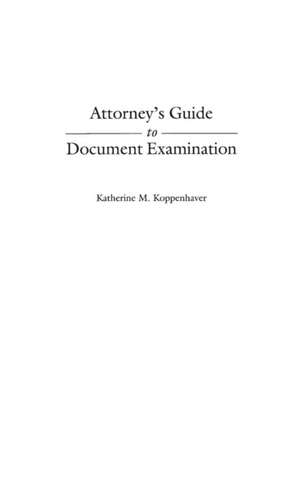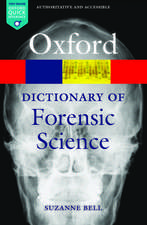Attorney's Guide to Document Examination
Autor Katherine Koppenhaveren Limba Engleză Hardback – 29 dec 2001 – vârsta până la 17 ani
Preț: 559.46 lei
Preț vechi: 800.37 lei
-30% Nou
Puncte Express: 839
Preț estimativ în valută:
107.05€ • 116.65$ • 90.21£
107.05€ • 116.65$ • 90.21£
Carte tipărită la comandă
Livrare economică 23 aprilie-07 mai
Preluare comenzi: 021 569.72.76
Specificații
ISBN-13: 9781567204704
ISBN-10: 1567204708
Pagini: 288
Dimensiuni: 156 x 235 x 27 mm
Greutate: 0.63 kg
Editura: Bloomsbury Publishing
Colecția Praeger
Locul publicării:New York, United States
ISBN-10: 1567204708
Pagini: 288
Dimensiuni: 156 x 235 x 27 mm
Greutate: 0.63 kg
Editura: Bloomsbury Publishing
Colecția Praeger
Locul publicării:New York, United States
Notă biografică
KATHERINE M. KOPPENHAVER is a Certified Document Examiner and a Diplomate of the National Association of Document Examiners (NADE), of which she is currently president./e
Cuprins
The Document ExaminerChoosing a Forensic Document ExaminerQuestioned Document CasesWorking with a Document ExaminerCollecting and Preserving DocumentsHandwriting IdentificationThe Evolution of the Written WordHandwriting CharacteristicsFactors that Influence HandwritingPrinciples of Handwriting and Handwriting IdentificationDocumentsMaterials from which Documents Are MadeOffice Equipment Used to Generate DocumentsDetecting FraudForgery and Other Types of FraudDetecting Fraudulant DocumentsTestimonyOpinion, Reports, and ExhibitsPreparation for Court and DepositionDeposition TestimonyPresenting a Document CaseCross-ExaminationCourt CitationsAppendixIndex







